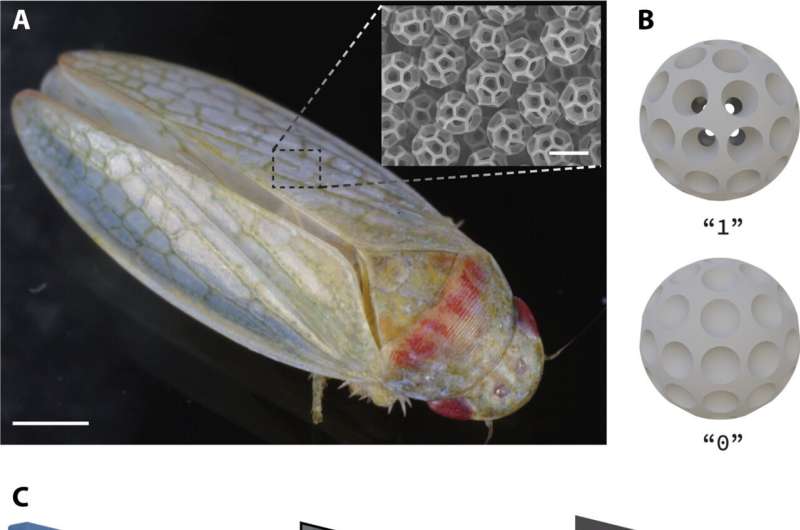This article has been reviewed according to Science X's editorial process and policies. Editors have highlighted the following attributes while ensuring the content's credibility:
fact-checked
peer-reviewed publication
trusted source
proofread
Micro mirage: Researchers fabricate the world's smallest QR code using infrared information carrier

Credit cards embedded chips, national mints printed watermarks, and high-profile locations installed retina scanners all for the same reason—to protect information. As attackers grow smarter, so must defense.
Sheng Shen, professor of Mechanical Engineering, along with collaborators at Penn State University, have developed a pixel-by-pixel approach to visible camouflage with hopes of scaling it for enhanced infrared surveillance, optical security, and anti-forgery protections. The research is published in the journal Science Advances.
"Our collaborators came to us with brochosomes—a 'magic' structure leafhoppers produce to create a cloak effect to hide from predators," Shen said. "We wanted to understand brochosomes' optical limitations to see what more we could do with them."
Brochosomes are 3D soccer ball-like objects with nanoscale cavities that internally absorb light rather than reflect it onto outside structures. In nature, biologists suspect that this allows leafhoppers to blend in with their background.
To test functionality, the team simulated two different versions of the structure, one with cavities for light absorption and one without.
"There is a fundamental law in physics that if a structure is a good absorber of energy it can emit an equal amount of energy," explained Zhuo Li, Ph.D. candidate at Carnegie Mellon. "We quickly realized that if we put both structures together one would emit more energy than the other. That would make one appear brighter to an infrared camera than the other."
And so began the development of the world's smallest QR code.
Using an advanced 3D printing technique, developed by the Penn State collaborators, the team controlled whether each pixel was printed as a structure with holes or without allowing them to fabricate a QR code readable by infrared camera alone.
Sizing up at less than 2% of an inch, the code is only visible under a microscope but both teams plan to explore ways to scale it for commercial use too.
"With this technology we are ultimately distorting an objects' thermal signature," said Li. "We have the power to disguise how objects are displayed on an infrared camera. Hypothetically, if we laid the brochosome pixels accordingly, we could paint a patrol car to appear as a delivery van to infrared security."
The team's unique combination of visible camouflage and infrared display creates new opportunities for data encryption and optical security.
"This is just the start of a new research area my team can explore," said Sheng. "We've taken infrared light and turned it from an energy carrier to an information carrier."
This research was conducted in collaboration with The Pennsylvania State University researchers: Dr. Lin Wang, and Professor Tak-Sing Wong.
More information: Zhuo Li et al, Brochosome-inspired binary metastructures for pixel-by-pixel thermal signature control, Science Advances (2024). DOI: 10.1126/sciadv.adl4027
Journal information: Science Advances





















